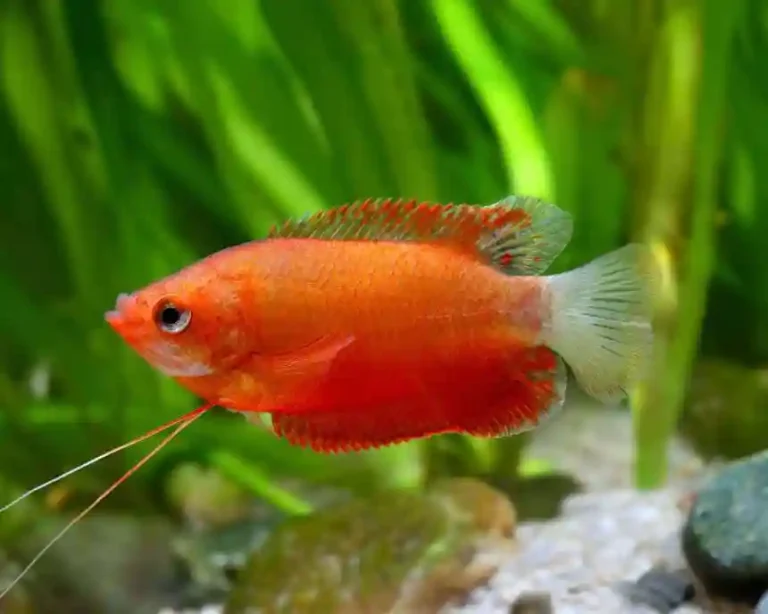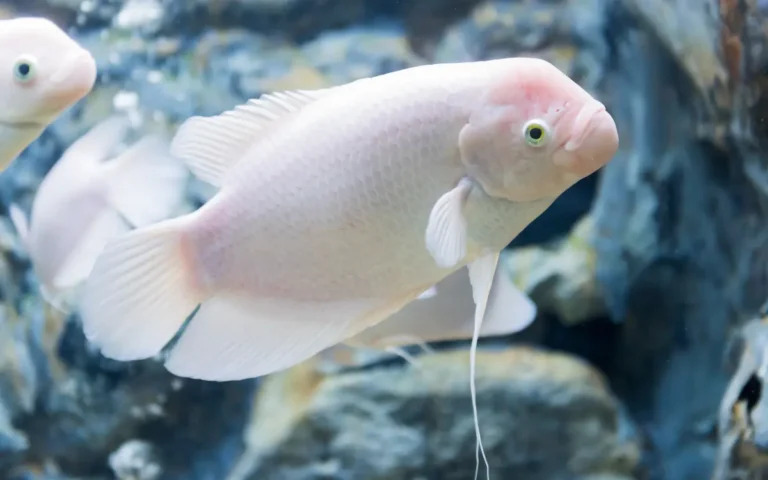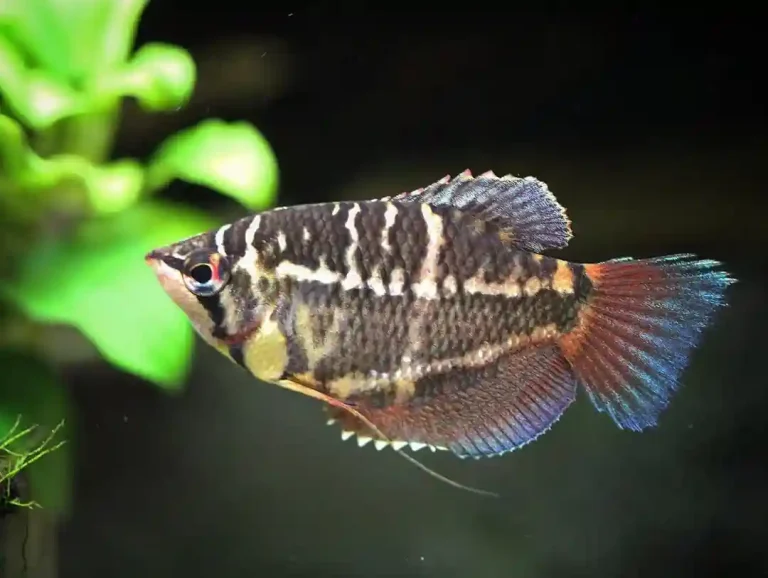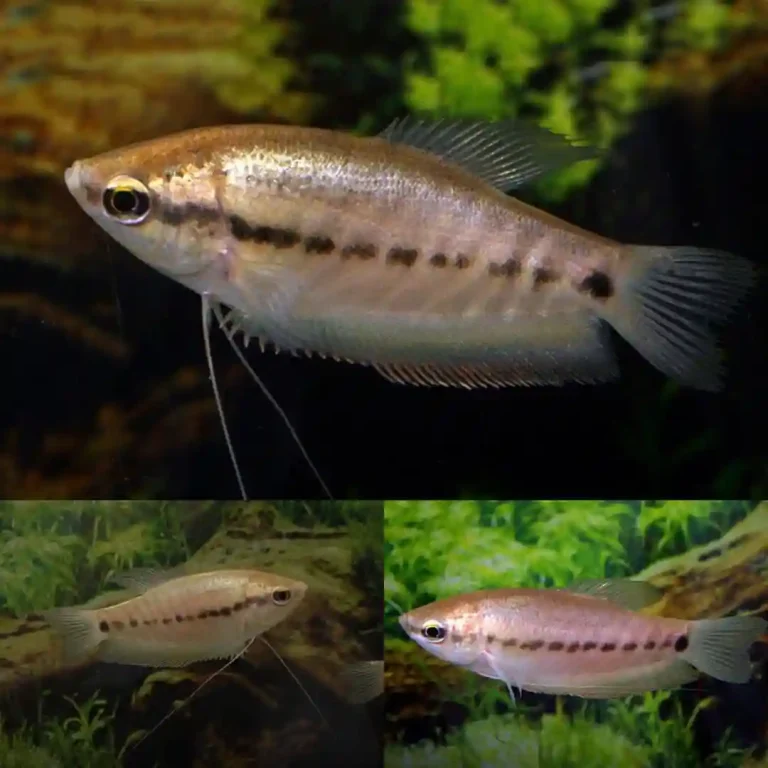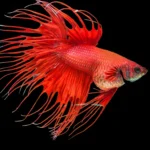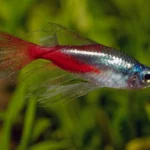Harlequin Rasbora Care Guide: Feeding, Tank Setup & Schooling Tips
Harlequin Rasboras (Trigonostigma heteromorpha) are peaceful, brightly colored schooling fish that add movement and contrast to planted aquariums. Known for their iconic black wedge and active behavior, they’re ideal for beginner community tanks. This care guide will walk you through everything from tank setup and feeding to ideal companions and breeding.
Harlequin Rasbora Species Profile
| Characteristic | Details |
| Scientific Name | Trigonostigma heteromorpha |
| Origin | Southeast Asia |
| Adult Size | 1.5–2 inches |
| Lifespan | 5–8 years |
| Temperament | Peaceful, social, schooling |
| Ideal Tank Size | Minimum 15 gallons |
| Water Temperature | 72–78°F |
| pH Range | 6.0–7.5 |
| Water Hardness | 2–10 dGH |
| Diet | Omnivore |
Species Overview

Harlequin Rasboras are native to the soft, slow-moving waters of Southeast Asia. Their triangular black body marking and shimmering orange-pink hue make them stand out in any aquascape. They are extremely peaceful and thrive in schools of six or more. Their schooling behavior and tolerance of a range of conditions make them a favorite for planted community tanks.
Appearance and Behavior
These fish are best recognized by the dark, wedge-shaped mark on the back half of their body, which contrasts beautifully with their metallic body tones. They are mid-to-top swimmers and school actively, especially when kept in larger groups.
My Experience: I’ve kept Harlequin Rasboras in various planted setups, and their schooling behavior is always on display when kept in numbers. They’re active but never chaotic, and their color becomes more vibrant in well-maintained tanks.
Ideal Tank Setup
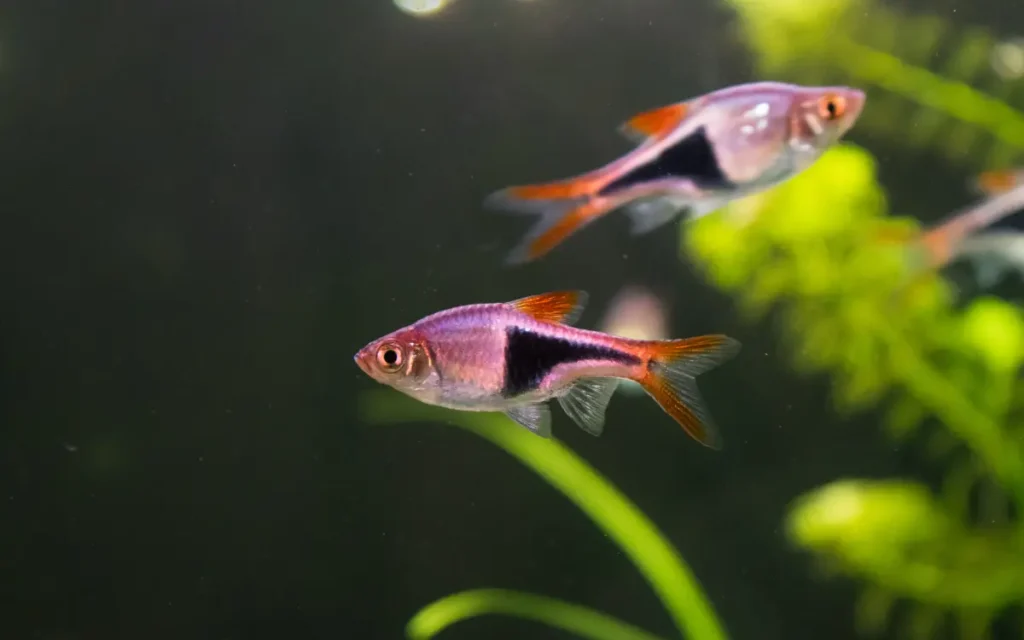
Start with a minimum 15-gallon tank for a small school. Use dark substrate to enhance their color, and include live plants like Java fern, Cryptocoryne, and floating plants. Maintain moderate lighting and provide open swimming space.
- Temperature: 72–78°F
- pH: 6.0–7.5
- Hardness: 2–10 dGH
Real Tip: Harlequin Rasboras appreciate blackwater-style tanks with leaf litter and driftwood. It helps reduce stress and brings out richer colors.
Compatible Tank Mates
These rasboras are peaceful and work well with:
- Corydoras Catfish
- Neon or Ember Tetras
- Dwarf Gouramis
- Otocinclus
- Cherry Barbs
- Snails and peaceful shrimp
Avoid fin-nipping fish or aggressive species. They also do well in species-only tanks.
Personal Note: I’ve paired Harlequins with Honey Gouramis and Pygmy Corydoras in a 20-gallon tank—the balance between activity and calm was perfect.
Feeding and Diet
They are easy to feed. Offer a mix of:
- Micro pellets and quality flakes
- Frozen daphnia or bloodworms
- Occasional live foods for enrichment
Feed once or twice daily. Watch their schooling behavior—it often intensifies at feeding time.
Breeding Harlequin Rasboras
Breeding can be done in a separate tank with soft, slightly acidic water and fine-leaved plants. Condition the fish with live or frozen foods. Spawning typically occurs in the morning. Eggs are laid under leaves and hatch within 24–36 hours. Remove adults after spawning to avoid egg loss.
What I’ve Learned: I had my first success with spawning when using almond leaves and lowering the tank light. They’re not difficult to breed, but setup and timing matter.
FAQ
How many Harlequin Rasboras should be kept together?
At least six, but 8–10 brings out natural schooling.
Are they good for planted tanks?
Yes, they thrive in planted environments and don’t uproot plants.
Can they live with bettas?
Yes, if the betta is non-aggressive and the tank is large enough.
Do they need a heater?
Yes, to maintain a stable temperature between 72–78°F.
Final Thoughts
Harlequin Rasboras are ideal schooling fish for any peaceful community tank. Their color, activity, and ease of care make them a reliable and rewarding choice for aquarists at any level.

